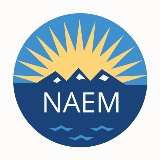Innovation Can Drive Triple Top Line Growth, NAEM Keynote Says

"The question of commerce today is 'How much can I get for how little I give?'" he told the crowd of more than 560 EHS and sustainability leaders gathered in Austin. "The new question is different…How much can we give for all that we get?"
Transforming business operations into closed-loop systems, Mr. McDonough said, could spur the kinds of innovations deliver "a delightfully diverse, safe, healthy and just world with clean air, water soil and power."
"I think commerce is the engine of change and commerce is the engine of this transformation," he said.
Since packaging is a key source of waste, it's also a key opportunity for innovation, he said. Like most consumer packaged goods, food products also involve multiple layers of packaging, many of which are neither recyclable nor biodegradable. Raw food products such as bananas, oranges and eggs, on the other hand, come with their own natural 'wrapping', he pointed out. By looking to nature as an example, companies could start to develop packaging that is as compostable as an orange peel.
Design innovations, however, are often slow to evolve, he said.
"It took us 5,000 years to put wheels on our luggage. It took us another 20 to put four wheels on them," Mr. McDonough.
Making the time for innovation is also challenge for many companies today, who are under pressure of short-term business cycles that demand quarterly returns, as Forum Chairman Allen Stegman, General Director of Environmental and Hazardous Materials with BNSF Railway pointed out during the question and answer session.
According to Mr. McDonough, though, business value is the best argument for this type of innovation.
"For the business people, we found that the most effective tool is money, so we insist that all of our projects have an intense profitability in them," he said.
The regulatory environment can also sometimes have the unintended consequence of inhibiting innovation in design, according to Elliot Levine, Environmental Engineer with Genentech Inc.
Mr. McDonough agreed that there is a need for innovative thinking at all levels of the system. He said California's building regulation that requires fire retardants is a good example of a policy that winds up being harmful to health but remains required by law.
"It's in the codes. I design cradle-to-cradle window shades and we have to have [fire retardants] for code," he said. "So there's a lot of change that has to come here."
"How do you want to innovate? Is this a signal of our chance to come up with new stuff? Or is a chance to lock down and entrench and protect our space? (for the people who are incumbent)," he said.
The all-too-common challenge of fighting for a robust EHS budget is also a common barrier for innovation, according to another attendee.
"Do you have any suggestions for how to tackle that, or what approach to take to overcome that hurdle and gain the ear of the people who make the decisions?" the attendee asked.
Mr. McDonough argued that enlightened leadership is key to transforming a company's operations, but said it's also important to build support among those who are entrenched in an organization's day-to-day culture. Those who are most enthusiastic and those who are most critical will be the best allies for the change, he said.
"You get the CEO to say, 'I want', but then you get people who want to kick it out on the field of play," Mr. McDonough said.
And given the scope of the environmental challenges that companies are facing today, he said, EHS and sustainability leaders are more important than ever before.
"The world gets better every day because you're here," he said. "That's the good news."
Related
About the Author

NAEM Staff
The National Association for Environmental, Health and Safety, and Sustainability (EHS&S) Management (NAEM) empowers corporate leaders to advance environmental stewardship, create safe and healthy workplaces and promote global sustainability. As the
leading business community for EHS&S decision-makers, we provide engaging forums, a curated network, peer benchmarking, research insights and tools for solving today’s corporate EHS&S management challenges. Visit us online at naem.org.

